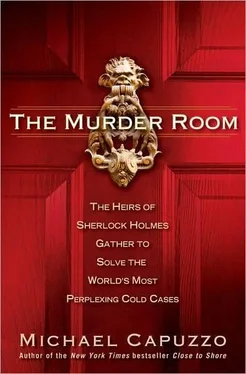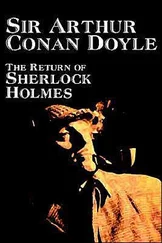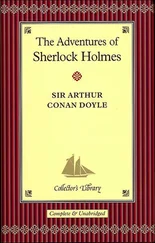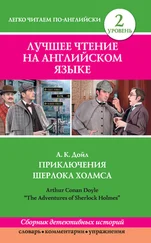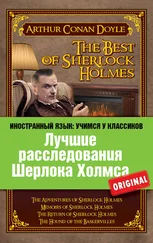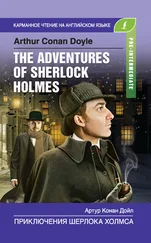Bender never used the word “psychic”; admit to that and he’d never work again. Cops and forensic intellectuals like Walter were the ultimate hypocrites: They mocked seers, except when they used them to spectacular result. Bender was more fully immersed in the world of the flesh than anyone he knew, but somehow it wasn’t his purpose.
That summer he found himself praying to God for the first time in his life. He had been given a single hard flame of purpose. Jan had been diagnosed with a fatal cancer, and Bender had abandoned all his other projects for the single task of keeping her alive.
The nonsmoker’s lung cancer had rapidly metastasized. Jan had left her job, and stopped chemotherapy after one session, saying it wasn’t worth the pain. Doctors at two city hospitals performed numerous tests and said she had weeks, perhaps months, to live. Bender held her through long sleepless nights of screaming pain; the morphine wasn’t helping. She was making plans to move into a hospice.
Bender’s partners were devastated for him and for Jan. Fleisher wept. All of them were feeling mortal. The Vidocq Society, now seventeen years old, was beginning to lose its old lions. Renowned pathologist Halbert E. Fillinger Jr., seventy-nine, said by many to embody the highest virtues of the Vidocq Society, died in June 2006 of complications from Parkinson’s disease. Fillinger, who worked as a pathologist for more than forty years, performed more than 50,000 autopsies, and helped solve hundreds of homicides, was nationally mourned in the forensics community. He was still working as the Montgomery County coroner the week before he died.
In May 2004, Detective Samuel Weinstein, the first officer on the scene at the Boy in the Box crime in 1957 and head of the Vidocq Society team still investigating the death, became the latest in a long blue line to follow the boy. Fleisher eulogized him as a “man among men,” a World War II combat Marine who served as a Philadelphia police detective for thirty-five years and voluntarily served with honor seven times with the Israel Defense Forces, including the tank division, making parachute jumps with the IDF while in his seventies. “Rest in peace, my friend,” Fleisher said. “You are in a far better place.”
Ressler, one of the FBI’s pioneers of modern criminal profiling, suffered from a rapidly advancing form of Parkinson’s disease. Walter was distraught. With Ressler in a wheelchair and unable to come to the phone, and his coauthor Keppel slowed by major heart surgery, his peers in the first generation of great American profilers were seriously ill or dying. “Who will I have to talk to?”
Fleisher had blacked out while at the wheel, with his wife and two daughters in the car, going sixty miles an hour on an expressway in upstate New York. He came to just in time, but was increasingly worried about his health and his weight. Walter lost days every winter to lung ailments.The training of Stoud took on a new imperative, as he felt his decades of heavy smoking closing in.
Walter was especially moved by Frank and Jan’s plight.
“Frank, I won’t pray for you,” he said, “because that’s not what I do. But I will bake some cookies and come down to Philadelphia and we will smoke and drink and enjoy life together. We will all have a marvelous time.”
That morning in July 2007, Bender returned to the only job he had allowed himself while supporting Jan through her battle with cancer. It was, ironically, a death mask, one of the crowning works of his career.
Bender had been commissioned by the Roman Catholic Church to sculpt the death mask for Saint John Nepomucene Neumann, the nineteenth-century Bishop of Philadelphia and the first American male saint. Neumann had died in 1860 and was buried in the basement of St. Peter’s Church at the corner of Fifth Street and Girard Avenue. The body was being fitted with new vestments, a new Episcopal ring, pectoral cross, and the new mask to mark the bicentennial of the Archdiocese of Philadelphia.
The body of the saint, now 147 years old and wearing the bishop’s miter and white robes, lay in a brightly lit glass case beneath the altar of the old Baroque stone church. Thousands of people from around the world visited the national shrine, pressing their hands against the glass and praying for intercessions, for favors and miracles. It was the intact skeleton of the saint, except for small bones that had been reverently removed many years before and cut into tiny pieces and set in very small, glass-covered containers that priests carried, sometimes set in crosses. These were the relics of the saint.
Bender, feeling a bit like Michelangelo, who had labored for popes, had to be approved by the Vatican itself to perform the sacred act of touching the body of a saint. Cardinal Justin Rigali, the Archbishop of Philadelphia, oversaw the opening of the saint’s casket and the exchange of the Episcopal garb. Bender was rebuilding the face from a single nineteenth-century photograph of Neumann.
That morning he gently caressed the plaster contours of the face again, and felt the familiar sense of awe and mystery he found hard to describe. Surely it was not the face of God he was touching, but to millions of people around the world, it was the next best thing.
He was pleased with his work. The Redemptorist Father Kevin Moley, the pastor of St. Peter’s, was coming to visit the studio that day to inspect his progress. Bender loved to talk to Father Moley about the amazing miracles attributed to the saint.
Within days of Bishop Neumann’s death at age forty-eight in 1860, devoted Catholics began coming to the church and praying at the tomb for special favors. Word spread that favors, even miracles, were being granted. Epidemics of typhoid and cholera that killed thousands of Philadelphians between 1891 and 1900 did not claim a single parishioner of Bishop Neumann’s church.
According to Father Moley, the first of the three documented miracles that led to sainthood occurred in 1923 in Sassuolo, Italy. Eva Benassi, eleven years old, beyond medical help with acute peritonitis, was given the last rites, as doctors said she could not survive the night. While praying over Benassi, a nun touched the girl’s abdomen with a picture of Neumann; that night the peritonitis disappeared.
The second miracle occurred in Villanova, Pennsylvania, on the Main Line of Philadelphia in 1949. On July 8, Kent Lenahan, nineteen years old, was standing on the running board of a moving car when it struck a telephone pole. His skull was crushed, his collarbone broken, a lung punctured. He was admitted to Bryn Mawr Hospital in a coma, and doctors said nothing could be done. Kent began his recovery after his parents prayed at the shrine of Neumann, and then touched him with a relic, a piece of cloth from the bishop’s cassock. A month later, he left the hospital on his own power.
In 1963, Michael Flanigan of Philadelphia, six years old, was dying from Ewing ’s sarcoma, a usually fatal form of cancer. Doctors said the boy had little hope of recovery. His parents took him to Neumann’s tomb, where a parish priest blessed the boy and touched his body with a crucifix containing a relic of the bishop, a chip of bone from the bishop’s remains. Another chip of bone, encased in glass, was pinned to the boy’s clothing. Six weeks later, all traces of the disease had disappeared.
Father Moley arrived on South Street that afternoon with a young priest. Bender showed them the death mask, nearly complete. The project had taken nearly a year of planning by the church, and now Father Moley was thrilled. “It’s magnificent,” he said.
Jan appeared, and Frank introduced her.
“My wife has cancer,” Bender said.
“May I pray for her?” Father Moley asked.
He looked at Jan, who nodded. “Please,” Bender said.
Читать дальше
